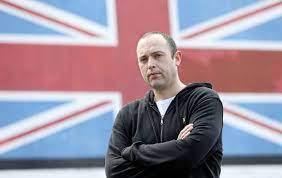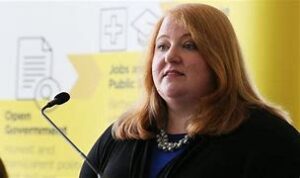Discovery with Ruth’s Granny

My grandmother was a fascist and a bigot whose politics my family loathed and about whom I’ve written quite often and who died when I was 15..
As I’ve explained to the crazies before, my granny was a supporter of violent republicanism who then became a fan of Mussolini, Hitler and even Stalin, which is why the family thought she was nuts.
How big is a big baby?
The average newborn weighs about 3.5kg (7lb 11oz). Babies weighing more than 4kg (8lb 13oz) at birth are considered larger than average, or macrosomic.
If you have a very large baby, weighing 4.5kg (9lb 15oz) or more, it can put you and your baby at greater risk of certain complications.
Although many women give birth to very big babies without any problems, it’s common to need a bit of help.
About one in eight babies in England, Scotland and Wales are born at a weight of 4kg or more, with fewer than one in 70 babies in England weighing 4.5kg or more.
In this game ya click the screen when between fingers, you are trying not to cut off fingers
In his book Mein Kampf and in public speeches prior to and in the early years of his rule, Hitler expressed himself as a Christian. Hitler and the Nazi party promoted “Positive Christianity”, a movement which rejected most traditional Christian doctrines such as the divinity of Jesus, as well as Jewish elements such as the Old Testament. In one widely quoted remark, he described Jesus as an “Aryan fighter” who struggled against “the power and pretensions of the corrupt Pharisees” and Jewish materialism. In his private diaries, Goebbels wrote in April 1941 that though Hitler was “a fierce opponent” of the Vatican and Christianity, “he forbids me to leave the church. For tactical reasons.”
Fascism
Fascism is a form of far-right, authoritarian ultra nationalism characterized by dictatorial power, forcible suppression of opposition, and strong regimentation of society and of the economy, which came to prominence in early 20th-century Europe. The first fascist movements emerged in Italy during World War I, before spreading to other European countries. Opposed to anarchism, democracy, liberalism, and Marxism, fascism is placed on the far right-wing within the traditional left–right spectrum.
Read the Klondike (Turn Three) rules if you’re new to playing Solitaire
The Society of United Irishmen, formed in 1791 and led primarily by liberal Protestants,[1] launched the 1798 Rebellion with the help of troops sent by Revolutionary France, but the uprising failed. A second rising in 1803 led by Irish patriot Robert Emmet was quickly put down on 23 July 1803. The Young Ireland movement, formed in the 1830s, broke with Daniel O’Connell’s Repeal Association because it believed that armed struggle was legitimate. Some members of Young Ireland staged an abortive rising in 1848. Its leaders were transported to Van Diemen’s Land. Some of these escaped to the United States, where they linked up with other Irish exiles to form the Fenian Brotherhood. Together with the Irish Republican Brotherhood, founded in Ireland by James Stephens and others in 1858, they made up a movement commonly known as “Fenians” which was dedicated to the overthrow of British imperial rule in Ireland. They staged another rising, the Fenian Rising, in 1867, and a dynamite campaign in England in the 1880s.
What does it mean to have a hyphenated last name?
A hyphenated last name is just what it sounds like: your and your partner’s last names, connected with—you guessed it—a hyphen. Oftentimes, hyphenated last names are described as a merge of a woman’s “maiden” and “married” names (her prewedding surname and her spouse’s surname). But this name change option definitely isn’t gender-exclusive.
Hitler and the Jews
Citation: C N Trueman “Hitler And The Jews”
historylearningsite.co.uk. The History Learning Site, 9 Mar 2015. 19 Aug 2021.
As early as September 1919, Adolf Hitler made it clear where his thoughts on the Jews lay. In a letter dated September 16th 1919 to a Herr Gemlich, Hitler put onto paper his ideas and thoughts, no doubt part formulated by the terms of the Treaty of Versailles.
Dear Herr Gemlich,
The danger posed by Jewry for our people today finds expression in the undeniable aversion of wide sections of our people. The cause of this aversion is not to be found in a clear recognition of the consciously or unconsciously systematic and pernicious effect of the Jews as a totality upon our nation. Rather, it arises mostly from personal contact and from the personal impression, which the individual Jew leaves – almost always an unfavourable one. For this reason, anti-Semitism is too easily characterised
as a mere emotional phenomenon. And yet this is incorrect. Anti-Semitism as a political movement may not and cannot be defined by emotional impulses, but by recognition of the facts. The facts are these: First, Jewry is absolutely a race and not a religious association. Even the Jews never designate themselves as Jewish Germans, Jewish Poles or Jewish Americans but always as German, Poles or American Jews. Jews have never yet adopted much more than the language of the foreign nations among whom they live. A German who is forced to make use of the French language in France, Italian in Italy, Chinese in China does not thereby become a Frenchman, Italian or Chinaman. It’s the same with the Jew who lives among us and is forced to make use of the German language. He does not thereby become a German. Neither does the Mosaic faith, so important for the survival of this race, settle the question of whether someone is a Jew or non-Jew. There is scarcely a race whose members belong exclusively to just one definite religion.
Through thousands of years of closest kind of inbreeding, Jews in general have maintained their race and their peculiarities far more distinctly than many of the peoples among whom they have lived. And thus comes the fact there lives amongst us a non-German, alien race which neither wishes nor is able to sacrifice its racial character or to deny its feeling, thinking, and striving. Nevertheless, it possesses all the political rights we do. If the ethos of the Jews is revealed in the purely material realm, it is even clearer in their thinking and striving. Their dance around the golden calf is becoming a merciless struggle for all those possessions we prize most highly on earth.
The value of the individual is no longer decided by his character or by the significance of his achievements for the totality but exclusively by the size of his fortune, by his money. The loftiness of a nation is no longer to be measured by the sum of its moral and spiritual powers, but rather by the wealth of its material possessions.
This thinking and striving after money and power, and the feelings that go along with it, serve the purposes of the Jew who is unscrupulous in the choice of methods and pitiless in their employment. In autocratically ruled states he whines for the favour of “His Majesty” and misuses it like a leech fastened upon nations. In democracies he vies for the favour of the masses, cringes before the “majesty of the people”, and recognises only the majesty of money. He destroys the character of princes with Byzantine flattery, national pride (the strength of a people), with ridicule and shameless breeding to depravity. His method of battle is that public opinion which is never expressed in the press but which is nonetheless managed and falsified by it. His power is the power of money, which multiplies in his hands effortlessly and endlessly through interest, and which forces peoples under the most dangerous of yokes. Its golden glitter, so attractive in the beginning, conceals the ultimately tragic consequences. Everything men strive after as a higher goal, be it religion, socialism, democracy, is to the Jews only means to an end, the way to satisfy his lust for gold and domination.
In his effect and consequences he is like a racial tuberculosis of the nations.
The deduction from all this is the following: an anti-Semitism based purely on emotional grounds, which finds its ultimate expression in the form of a pogrom. An anti-Semitism based on reason, however, must lead to systematic legal combating and elimination of the privileges of the Jews, that which distinguishes the Jews from other aliens who live among us. The ultimate objective must, however, be the irrevocable removal of the Jews in general.
For both these ends a government of national strength, not of national weakness, is necessary. The Republic in Germany owes its birth not to the uniform national will of our people but the sly exploitation of a series of circumstances which found general expression in a deep, universal dissatisfaction. These circumstances however were independent of the form of the state and are still operative today. Indeed, more so now than before. Thus, a great portion of our people recognises that a changed state-form cannot in itself change our situation. For that it will take a rebirth of the moral and spiritual powers of the nation.
And this rebirth cannot be initiated by a state leadership of irresponsible majorities, influenced by certain party dogmas, an irresponsible press, or international phrases and slogans. It requires instead the ruthless installation of nationally minded leadership personalities with an inner sense of responsibility.
But these facts deny to the Republic the essential inner support of the nation’s spiritual forces. And thus today’s state leaders are compelled to seek support among those who draw the exclusive benefits of the new formation of German conditions, and who for this reason were the driving force behind the revolution – the Jews. Even though, as various statements of the leading personalities reveal, today’s leaders fully realised the dangers of Jewry, they (seeking their own advantage) accepted the readily proffered support of the Jews, and also returned the favour. And this pay-off consisted not only in every possible favouring of Jewry, but above all in the hindrance of the struggle of the betrayed people against its defrauders, that is in the repression of the anti-Semitic movement.
Respectfully
Adolf Hitler
Cumann na mBan (Irish pronunciation: [ˈkʊmˠən̪ˠ n̪ˠə ˈmˠanˠ]; literally “The Women’s Council” but calling themselves The Irishwomen’s Council in English),[1] abbreviated C na mB,[2] is an Irish republican women’s paramilitary organisation formed in Dublin on 2 April 1914, merging with and dissolving Inghinidhe na hÉireann, and in 1916, it became an auxiliary of the Irish Volunteers.[3] Although it was otherwise an independent organisation, its executive was subordinate to that of the Irish Volunteers, and later, the Irish Republican Army.
They were active in the War of Independence and took the anti-Treaty side in the Civil War. Cumann an mBan were declared an illegal organisation by the government of the Irish Free State in 1923. This was reversed when Fianna Fáil came to power in 1932. During the splits in the Republican movement of the later part of the 20th century, Fianna Éireann and Cumann na mBan supported Provisional Sinn Féin in 1969 and Republican Sinn Féin in 1986.
List of bombings during the Northern Ireland Troubles
This is a list of notable bombings related to the Northern Ireland “Troubles” and their aftermath. It includes bombings that took place in Northern Ireland, the Republic of Ireland and Great Britain since 1969. There were at least 10,000 bomb attacks during the conflict (1969–1998).
1969
- 30 March The Ulster Protestant Volunteers (UPV) bombed an electricity station at Castlereagh, resulting in blackouts. A further five bombs were exploded at electricity stations and water pipelines throughout April. Many believe this was part of a loyalist plot to frame the Irish Republican Army (IRA) and bring an end to equality reforms. Not all of the bombings are recorded
1971
- 4 December McGurk’s Bar bombing – 15 civilians were killed and 17 injured by a Ulster Volunteer Force (UVF) bomb in Belfast.[2]
1972
- 22 February Aldershot bombing – seven people were killed by an Official IRA bomb at Aldershot Barracks in England. It was thought to be in retaliation for Bloody Sunday. Six of those killed were female ancillary workers and the seventh was a Roman Catholic padre.[3]
- 4 March A bomb exploded without warning in the Abercorn restaurant on Castle Lane in Belfast. Two were killed and 130 injured.
- 14 April The Provisional Irish Republican Army (Provisional IRA) exploded 24 bombs in towns and cities across Northern Ireland. There was also 14 shootouts between the IRA and security forces.
- 21 July Bloody Friday – within the space of 75 minutes, the Provisional IRA exploded 22 bombs in Belfast. Nine people were killed (including two British soldiers and one UDA member) while 130 were injured.[4]
- 31 July Claudy bombing – nine civilians were killed by a car bomb in Claudy, County Londonderry. No group has since claimed responsibility.[5]
- 1 December Two civilians were killed and 127 injured by two Loyalist car bombs in Dublin, Republic of Ireland.
1973
- 11 May A RUC officer, John Kirkpatrick, was seriously injured by a car bomb which detonated as he attempted to start his TVR 1600M outside of 79 Eglantine Avenue in Belfast.[6][7][8]
- 17 May Five British soldiers were killed by a Provisional IRA (PIRA) bomb in Omagh, County Tyrone.
- 12 June Six Protestant civilians were killed by a Provisional IRA (PIRA) bomb in Coleraine, County Antrim. The warning given prior to the explosion had been inadequate.
1974
- 4 February M62 coach bombing – 12 people were killed by an IRA bomb planted on a coach carrying British soldiers and their families.[9]
- 2 May Six Catholic civilians were killed and 18 injured by a UVF bomb at a bar in Belfast.
- 17 May Dublin and Monaghan bombings – the Ulster Volunteer Force exploded four bombs (three in Dublin, one in Monaghan) in the Republic of Ireland. They killed 33 civilians including a pregnant woman.[10]
- 17 June The Provisional IRA bombed the Houses of Parliament in London, injuring 11 people and causing extensive damage.[11]
- 5 October Guildford pub bombings – Four soldiers and one civilian were killed by PIRA bombs at two pubs in Guildford, England.[12]
- 21 November Birmingham pub bombings – 21 civilians were killed by PIRA bombs at pubs in Birmingham, England.[13]
- 22 December The Provisional IRA announced a Christmas ceasefire. Prior to ceasefire, they carried out a bomb attack on the home of former Prime Minister Edward Heath. Mr Heath was not in the building at the time and no one was injured.[14]
1975
- 17 July Four British soldiers were killed by a Provisional IRA bomb near Forkhill, County Armagh. The attack was the first major breach of the February truce.
- 5 September Two killed and 63 injured when a bomb was detonated in the lobby of London’s Hilton Hotel.[15]
1976
- 13 January two civilians and two bombers killed in M and I Gallagher, North Street Arcade
- 15 May Five Catholic civilians were killed and many injured by two Ulster Volunteer Force bomb attacks in Belfast and Charlemont, County Armagh.
- 21 July Christopher Ewart Biggs, the British Ambassador to Ireland, and his secretary Judith Cook, were assassinated by a bomb planted in Mr. Biggs’ car in Dublin.[16]
1978
- 17 February La Mon restaurant bombing – 12 civilians were killed and 30 injured by a Provisional IRA incendiary bomb at the La Mon Restaurant near Belfast.
- 21 September The Provisional IRA exploded bombs at the RAF airfield near Eglinton, County Londonderry. The terminal building, two aircraft hangars and four planes were destroyed.
- 14–19 November The Provisional IRA exploded over 50 bombs in towns across Northern Ireland, injuring 37 people. Belfast, Derry, Armagh, Castlederg, Cookstown
- and Enniskillen were hardest hit.
1979
- 22 March The Provisional IRA also exploded 24 bombs in various locations across Northern Ireland.
- 30 March Airey Neave, Conservative was assassinated . A bomb exploded in his car as he left the Palace of Westminster in London. The Irish National Liberation Army (INLA) later claimed responsibity for the assassination.[17]
- 17 April Four RUC officers were killed by a Provisional IRA van bomb in Bessbrook, County Armagh. The bomb was estimated at 1000 lb, the largest Provisional IRA bomb used up to that point.
- 27 August Warrenpoint ambush – 18 British soldiers were killed by a Provisional IRA bomb in Warrenpoint. A gun battle ensued between the Provisional IRA and the British Army, in which one civilian was killed. On the same day, four people (including the Queen’s cousin Lord Louis Mountbatten) were killed by an IRA bomb on board a boat near the coast of County Sligo.[18][19]
- 16 December Four British soldiers were killed by a Provisional IRA landmine near Dungannon, County Tyrone. Another British soldier was killed by a Provisional IRA landmine near Forkhill, County Armagh.
1980
- 17 January Dunmurry train explosion – a Provisional IRA bomb prematurely detonated on a passenger train near Belfast, killing three and injuring five civilians.
1982
- 20 April The Provisional IRA exploded bombs in Belfast, Derry, Armagh, Ballymena, Bessbrook and Magherafelt. Two civilians were killed and 12 were injured.
- 20 July Hyde Park and Regents Park bombings – 11 British soldiers and seven military horses died in Provisional IRA bomb attacks on Regent’s Park and Hyde Park, London. Many spectators were badly injured.[20]
- 6 December Droppin Well bombing – 11 British soldiers and six civilians were killed by an Irish National Liberation Army (NLA) bomb at the Droppin’ Well Bar, County Londonderry.
1983
- 13 July Four Ulster Defence Regiment (UDR) soldiers were killed by a PIRA landmine in County Tyrone.
- 17 December Harrods bombing – a Provisional IRA car bomb killed three policemen and three civilians and injured ninety outside a department store in London.
1984
- 18 May Three British soldiers were killed by a Provisional IRA landmine in Enniskillen, County Fermanagh. Two RUC officers were killed by a Provisional IRA landmine near Camlough, County Armagh.
- 12 October Brighton hotel bombing – the Provisional IRA carried out a bomb attack on the Grand Hotel, Brighton, which was being used as a base for the Conservative Party Conference. Five people, including MP Sir Anthony Berry, were killed. Margaret and Denis Thatcher narrowly escaped injury.[21]
1985
- 28 February Newry mortar attack – a Provisional IRA mortar attack on the Newry RUC station killed nine officers and injured thirty-seven.[22]
- 20 May Four Royal Ulster Constabulary officers were killed by a Provisional IRA bomb near Killean, County Down.
- 7 December Attack on Ballygawley barracks – the Provisional IRA launched an assault on the RUC barracks in $3, County Tyrone. Two RUC officers were killed and the barracks was completely destroyed by the subsequent bomb explosion.
1987
- 8 November Remembrance Day bombing – 11 civilians were killed and sixty-three injured by a Provisional IRA bomb during a Remembrance Day service in Enniskillen, County Fermanagh. One of those killed was Marie Wilson. In an emotional BBC interview, her father Gordon Wilson (who was injured in the attack) expressed forgiveness towards his daughter’s killer, and asked Loyalists not to seek revenge. He became a leading peace campaigner and was later elected to the Irish Senate. He died in 1995.[23]
1988
- 15 June Six off-duty British soldiers were killed by a Provisional IRA bomb on their minibus in Lisburn.
- 20 August Ballygawley bus bombing – eight British soldiers were killed and 28 wounded by a Provisional IRA roadside bomb near $3, County Tyrone.
1989
- 22 September Deal barracks bombing – 11 Royal Marine‘s bandsmen were killed by the Provisional IRAat Deal Barracks in Kent, England.[24]
1990
- 9 April Four UDR soldiers were killed when the Provisional IRA detonated a culvert bomb under their patrol vehicle in Downpatrick, County Down. The bomb contained over 1,000 lb (450 kg) of explosive and was so powerful that the vehicle was blown into a nearby field.[25][26]
- 20 July The Provisional IRA bombed the London Stock Exchange.[27]
- 6 September The Provisional IRA planted two bombs aboard the Royal Fleet Auxiliary replenishment ship RFA Fort Victoria. One of them exploded, disabling the ship which had been constructed in Belfast and launched some weeks before. The second bomb failed to go off and was found and defused 15 days later.
- 24 October Proxy bomb attacks – the Provisional IRA launched three “proxy bombs” or “human bombs” at British Army checkpoints. Three men (who were working with the British Army) were tied into cars loaded with explosives and ordered to drive to each checkpoint. Each bomb was detonated by remote control. The first exploded at a checkpoint in Coshquin, killing the driver and five soldiers. The second exploded at a checkpoint in Killean; the driver narrowly escaped but one soldier was killed. The third failed to detonate.[28]
1991
- 3 February The Provisional IRA launched a ‘proxy bomb‘ attack on a Ulster Defence Regiment base in Magherafelt, County Londonderry. The bomb caused major damage to the base and nearby houses, but the driver escaped before it exploded.
- 18 February A Provisional IRA bomb exploded in a litter bin at Victoria Station, London, killing David Corner, and injuring 38. Since that time, there have been no litter bins anywhere on the station platform.[29]
- 31 May Glenanne barracks bombing – the Provisional IRA launched a large truck bomb attack on a UDR barracks in County Armagh. Three soldiers were killed, whilst ten soldiers and four civilians were wounded.
- 2 November Two British soldiers were killed when the IRA detonated a bomb at Musgrave Park British Army hospital in Belfast. A two storey building was destroyed by the blast.[30]
- 15 November A provisional IRA bomb exploded in St Albans City Centre. Two fatalities, both members of the provisional IRA (Patricia Black and Frankie Ryan), were the only casualties.[31]
1992
- 17 January Teebane bombing – A 600 pounds (270 kg) -1,500 pounds (680 kg) per another source[32]– roadside bomb detonated by the Provisional IRA destroyed a van and killed eight construction workers (one of them a soldier) on their way back from Lisanelly British Army barracks in Omagh, County Tyrone, where they were making repairs. Another eight were wounded.[33]
- 10 April Baltic Exchange bombing – a van loaded with one-ton of home-made explosives went off outside the building of the Baltic Exchange company, at 30 St Mary Axe, London, killing three people and injuring other 91.[34] The Provisional IRA bomb caused £800 million worth of damage, £200 million more than the total damage caused by the 10,000 explosions that had occurred during the Troubles in Northern Ireland up to that point.[35]
- 1 May Attack on Cloghogue checkpoint – the Provisional IRA, using a van modified to run on railway tracks, launched an unconventional bomb attack on a British Army checkpoint in South Armagh. The checkpoint was obliterated when the 1,000 kg bomb exploded, killing one soldier and injuring 23.
- 12 May Coalisland riots – After a small Provisional IRA bomb attack in the village of Cappagh, in which a paratrooper lost both legs, British soldiers raided two public houses and caused considerable damage in the nearby town of Coalisland. This led five days later to a fist-fight between soldiers and local inhabitants. Shortly thereafter, another group of British paratroopers arrived and fired on a crowd of civilians, injuring seven. Two soldiers were hospitalized.
- 23 September The Provisional IRA exploded a 3,700 lb bomb[36] at the Northern Ireland forensic science laboratory in south Belfast. The laboratory was obliterated, 700 houses were damaged, and 20 people were injured.[37] 490 owner and occupiers claim for damages.[38]
1993
- 4 February Two IRA bombs exploded in the London area, one at a London Underground station and another on a Network Southeast train in Kent.[39]
- 20 March Warrington bomb attacks – after a telephoned warning, the Provisional IRA exploded two bombs in Cheshire, England. Two children were killed and 56 people were wounded. There were widespread protests in Britain and the Republic of Ireland following the deaths.[40]
- 24 April Bishopsgate bombing – after a telephoned warning, the Provisional IRA exploded a large bomb at Bishopsgate, London. It killed one civilian, wounded 30 others, and caused an estimated £350 million in damage.[41]
- 6 July A large IRA bomb caused widespread damage to the centre of Newtownards, Co Down. The centre of the market town was devastated by a bomb which the IRA said contained 1,500 lbs of explosive. Seven people were injured, one seriously.[42]
- 23 October Shankill Road bombing – eight civilians, one UDA member and one Provisional IRA member were killed when an IRA bomb prematurely exploded at a fish shop on Shankill Road, Belfast.
1996
- 9 February London Docklands bombing – the Provisional IRA bombed the Docklands in London. The bomb killed two civilians, and brought to an end the ceasefire after 17 months and nine days.[43]
- 15 June Manchester bombing – the Provisional IRA exploded a bomb in Manchester, England. It destroyed a large part of the city centre and injured over 200 people. To date, it is the largest bomb to be planted on the British mainland since the second world war. The devastation was so great, that several buildings were damaged beyond repair, and had to be demolished.[44]
- 7 October The Provisional IRA exploded two car bombs at the British Army HQ in Thiepval Barracks, Lisburn. One soldier was killed and 31 injured.
1997
- 16 September Markethill bombing- the dissident Continuity IRA (CIRA) planted a 400-lb van bomb in the village of Markethill, County Armagh, just outside the local RUC station, causing widespread damage but a few injures.[45] The bombing happened a day after Sinn Féin joined the political negotiations which led to the Good Friday Agreement.[46]
1998
- 15 August Omagh bombing – a dissident republican group calling itself the Real IRA exploded a bomb in Omagh, County Tyrone. It killed 29 civilians, making it the worst single bombing of the Troubles, in terms of civilian life lost.
1999
- 15 March Solicitor Rosemary Nelson, who had represented the Catholic and nationalist residents in the Drumcree dispute, was assassinated by a booby trapped car bomb in , County Armagh. A loyalist group, Red Hand Defenders, claimed responsibility.[47]
2001
- 4 March BBC bombing – a Real IRA bomb exploded outside BBC Television Centre, causing some damage to the building.[48]
- 3 August Ealing bombing – a Real IRA car bomb injured seven civilians in Ealing, west London.[49]
McKee was born in Belfast on 12 November 1921,[3] and joined the Irish Republican Army (IRA) in 1939. During the Second World War, the IRA carried out a number of armed actions in Northern Ireland known as the Northern Campaign. McKee was arrested and imprisoned in Crumlin Road Gaol until 1946 for his role in this campaign. In 1956, the IRA embarked on another armed campaign against partition, known as the Border Campaign. McKee was again arrested and interned for the duration of the campaign. He was released in 1962.[4]
Upon release, he became Officer Commanding (OC) of the IRA’s Belfast Brigade.[4] However, he resigned this position in 1963, after a dispute with other republicans after McKee acceded to a Royal Ulster Constabulary (RUC) demand that he not fly an Irish tricolour during a republican march.[5] He was succeeded by Billy McMillen.[6]
As the 1960s went on, McKee drifted away from the IRA. He grew very disillusioned with the organisation’s increasing emphasis on socialism and reformist politics over “armed struggle”. McKee was a devout Roman Catholic, who attended Mass daily. As a result, he was very uncomfortable with what he felt were “communist” ideas coming into the republican movement.[7]
A faction led by Adams managed to get McKee voted off the IRA Army Council in 1977, effectively forcing him out of the leadership of the organisation. McKee’s health suffered in this period and he did not resume his IRA activities.[18] He joined Republican Sinn Féin after a split in Sinn Féin in 1986.
In later years McKee, Brendan Hughes and Tommy McKearney were critical of the Belfast Agreement and of the reformist politics of Sinn Féin.[19]
Billy McKee died on 11 June 2019, aged 97.[20][21] His funeral took place on 15 June 2019 in west Belfast.[22] His coffin was carried on a gun carriage.[23]







Hey there,
Hope you’re doing well. My name is Amin and I am working as a freelance digital marketer. I saw one of your articles and it really caught my attention.
The reason I am contacting you is I wanted to have a link insertion in that article, I am ready to pay a fee for that. Can you please let me know whether is it possible to add a link to an already published article and what will be the price for that?
Thanks,
Amin.